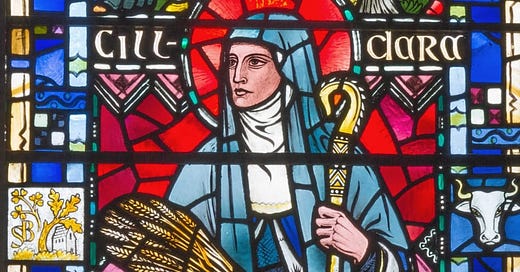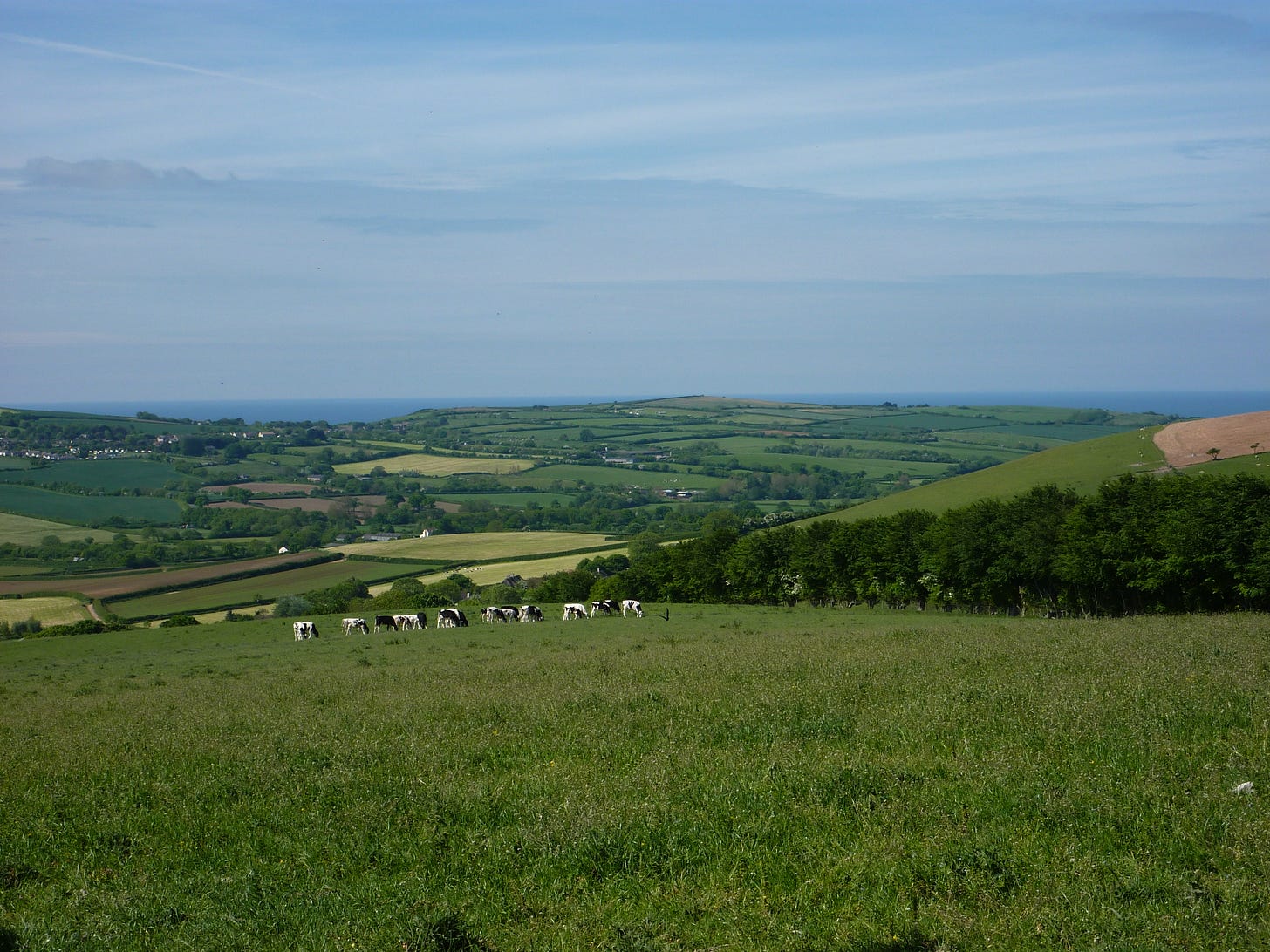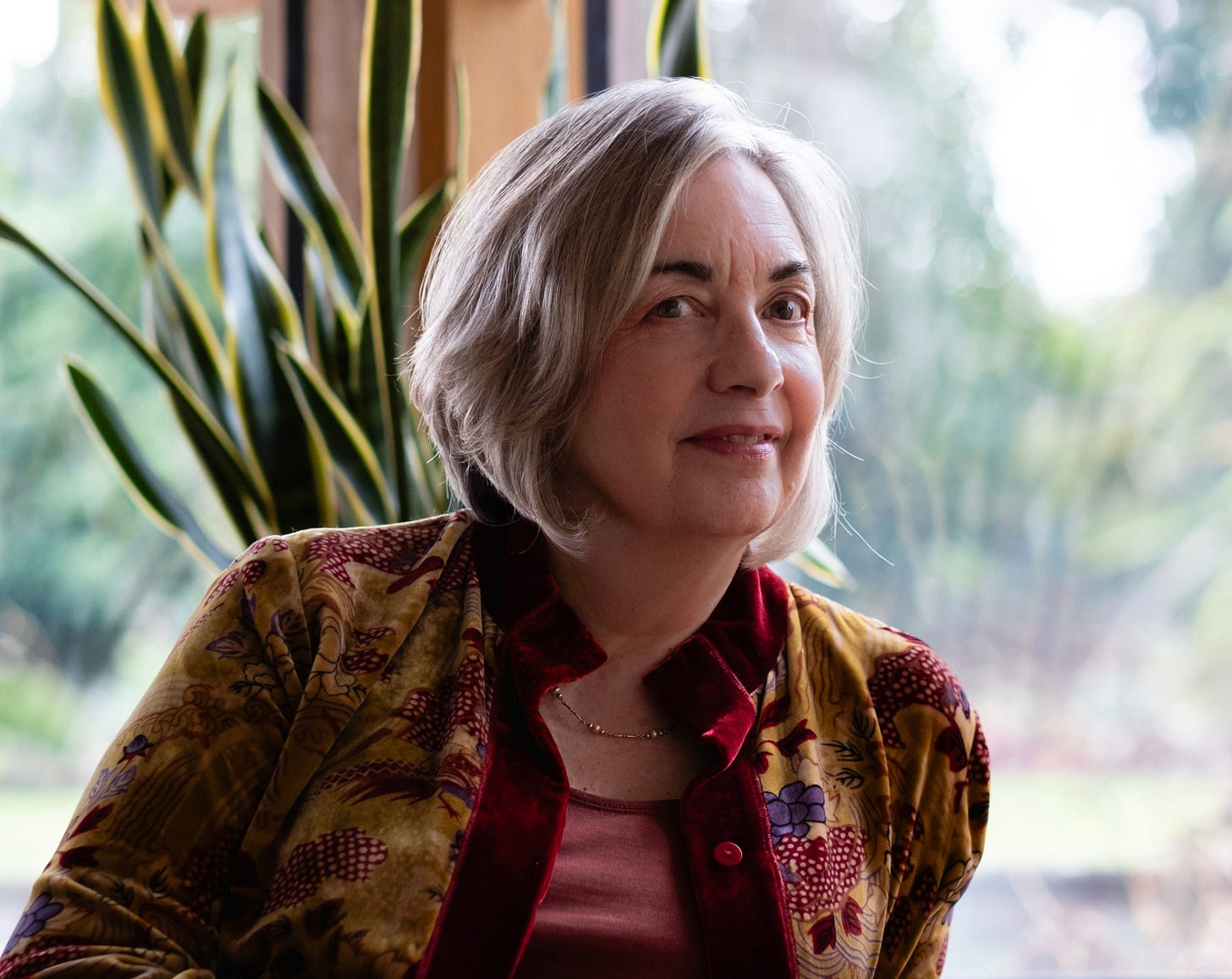Symbolism and Meaning of Early February: Imbolc and Brigid’s Day
Early February has long been celebrated as a holiday, often associated with women. In ancient Ireland it was first celebrated as Imbolc and as Brigid’s Day. In the Christian tradition, first in the Mediterranean and later in all of Europe, it is celebrated as Candlemas and St. Bridget’s Day.
At this time of year in the Northern Hemisphere, the land, refreshed from the resting period of winter and purified by frosts, is getting ready for cultivation, for the renewal of the agricultural year. This is a moment of quickening, as the spark of life reappears, coming up from its deep underground slumber.
In the USA, Feb 2 is Groundhog Day, a celebration of the lengthening days causing small furry creatures to poke their noses out of their hibernation holes and sniff the warming air.
The Chinese and Tibetan New Years occur in early Spring. These are calculated by slightly different combined lunisolar methods and usually fall somewhere in the late January, early February window, on the second New Moon after the Winter Solstice.
Associations and Significance
The Celts/ancient Northern Europeans celebrated the beginning of February with bonfires and feasts, to mark the return of solar warmth and light, and the fertility of beasts and land. They considered the moment when the Sun reached the halfway point between the Winter Solstice and the Spring Equinox as highly significant. This midpoint lies at 15 degrees of Aquarius in the astrological Zodiac. February 2 is when the Sun used to be at the midpoint. These days, it is now a day or two later, and in 2024 falls on February 4.
Like the other cross-quarter days (the festivals that fall midway between the solstices and equinoxes), Imbolc was a fire festival and a major holyday in the Celtic calendar. It was the festival of the lactation of the ewes: the word Imbolc is Gaelic for “in the belly” and referred to pregnant ewes and the time of lambing. Sheep were crucial providers of both food and clothing and the arrival of lambs was a time for celebration.
The specific areas of dedication at Imbolc, associated with Brigit/Brigid, the Irish virgin goddess, were virgins, healing, and poets. Imbolc is a virginal time in that everything is new, purified by winter and becoming ready for impregnation, the sowing of the seed. Brigid is associated with healing. It’s not clear how the association with poetry fits in here, but it may be because poetry is the purest of the creative forms and needs no tools other than the voice. (Extemporaneous poetry was the most highly esteemed of the Bardic arts, requiring purity of mind and clarity of intent in order to allow the voice of the divine to enter through the channel of the poet.)
Brigid/Brigit, also known as Brighid, Bride, Brighde, or Bridget, was a major goddess in the ancient Celtic pantheon. She was adopted by the early Christian Church as St Bridget and frequently associated with the Virgin Mary. She was sometimes a midwife to Mary and at other times conflated with her, as in medieval Ireland where she was known as Mary of the Gael and revered as a muse to poets. St Bridget is the patroness of Ireland and still a major saint. The Christians adopted the holiday of St. Brigit’s Day/Imbolc and called it Candlemas, integrating the old practice of lighting new candles on this day as symbolic of the new light, the new year, the new impetus for creativity. It is still the day of the Feast of the Purification of the Virgin, as February 2 is forty days since December 25, the (official) birthday of Jesus.
St. Brigid of Kildare in St Etheldreda Church. Image by Joseph Edward Nuttgens, via Deposit Photos
Memorials and mentions of Bridget as St Bride are found throughout the UK. I once lived in the Bride Valley in West Dorset, an unspoilt, broad and verdant valley through which the River Bride runs down to the English Channel. If you are ever in London, I recommend a visit to St. Bride’s Church in Fleet Street, one of the oldest churches in the city. There is an ancient crypt underground that one can visit and meditate in. Seven churches have been built on the site over the past two thousand years: this is an ancient place of worship, and has a palpable, deep, earth energy, very nourishing and feminine. Due to the proximity of the first printing press and the subsequent growth of the print trade, St Bride’s has long been associated with printing and journalism, and has a side-chapel with an altar dedicated to journalists imprisoned or killed in their line of work.
St Bride’s song
“I long for a great lake of ale
I long for the meats of belief and pure piety
I long for flails of penance at my house
I long for them to have barrels full of peace
I long to give away jars full of love
I long for them to have cellars full or mercy
I long for cheerfulness to be in their drinking
I long for Jesus too to be there among them.”
Celebrating Imbolc Today
Simple things to do to honor Imbolc include praying to St Brigid, lighting new candles throughout the house, wearing new clothes, and making lists of intentions for the coming season. If you want to have a feast, the dish of choice is roast lamb. But don’t forget that Imbolc is also a good time for a detox or fast, as the watchwords for this phase are purification and cleansing. And all of the Celtic fire festivals were traditionally times for gathering around a bonfire and celebrating the warmth of community.
The purity of the Imbolc symbolism is very much part of the newness of the year. Life is refreshed by cleansing, by letting go. This is a time to release attachment to past pain, to let go of whatever outdated stories about yourself and your life you are hanging onto, to allow the healing of forgiveness and acceptance to soothe old injuries of heart and soul.
It is an excellent time to review what has and has not already been achieved, and to assess which of your dreams you still want to pursue and which ones you might as well let go of.
It’s a potent time to clear away past disappointments, to let go of old ideas about yourself, and step fully into the present. And on the mundane and physical level, it’s a great time to clear out and give away all that stuff you no longer need.
The Bride Valley in West Dorset, with the English Channel two miles away.
About me and this Substack
I’m launching this Substack today as it’s a time for new beginnings. Imbolc has long held meaning for me and I find it a stronger marker of the New Year than January 1st. This year, I found myself revisiting some of my old writings on the ancient holydays as important cyclical markers in the year, and found much of this essay in a piece I wrote 20 years ago.
I set up my Substack account a while back, as a way to share my work on cyclical living and associated topics. But family needs and finishing a book and starting to teach a major course all meant I haven’t had the space to write for it until now. I intend to write regularly from now on — how often remains to be seen. For now it will be free. If you would like to learn more about my work please visit my website at https://laraowen.com.
Until the next time, Imbolc blessings to you all, and all love and luck to you for the coming fertile season.
Lara Owen, December 2023. Photo by Paul Carter (info@photodesign.co.uk)






